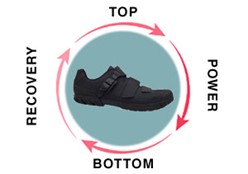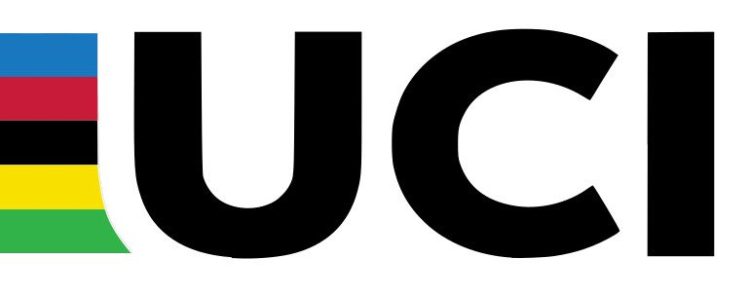Optimizing the Recovery Phase: The Little Brother of the Pedal Stroke
By Christopher Schwenker
A keen understanding of the recovery phase is another wrench in your cycling knowledge toolbox.
If you’ve read my previous article on “Maximizing the Power Phase of your Pedal Stroke,” you’ll know just how vital the downstroke is for generating force and power. In that article, we explored how the glutes, quads, hamstrings, and calves work in concert to propel you forward during the most powerful portion of the pedal stroke, emphasizing that it’s not “All about the quads!”
Understanding the power phase alone isn’t enough to optimize your cycling efficiency. What goes down must come up in the cycling pedal stroke universe. To get the most from your pedaling technique, you must also focus on the recovery phase – the upstroke.
The Overlooked Phase: The Upstroke
Often referred to as the “little brother” of the power phase, the recovery phase is just as crucial to your overall performance. While the downstroke demands the most attention for generating power, the recovery phase is where smooth transitions and muscle engagement ensure that you don’t leave any energy behind as you prepare for the next powerful stroke.
Cyclists understandably overlook this vital element, yet it plays a significant role in maintaining cycling efficiency and preventing unnecessary fatigue.
Think of the recovery phase as the “supporting actor” of the pedal stroke. Understanding and improving this phase allows you to seamlessly flow between the upstroke and downstroke, ensuring that every watt counts. It’s not just about pulling the pedal; it’s about engaging the right muscles at the right time to keep your power output consistent and efficient.
In this article, we’ll break down the recovery phase, discussing the muscles involved and the techniques to help you make the most of it. As with the power phase, optimizing the recovery phase is essential for improving your cycling performance and efficiency.
Understanding the Recovery Phase of the Pedal Stroke: How to Maximize Efficiency
A detailed breakdown of the pedal stroke divides it into four distinct phases:
- Downstroke (Power Phase) – 1 to 5 o’clock
- Transition to Upstroke (Backstroke) – 5 to 7 o’clock
- Upstroke (Recovery Phase) – 7 to 11 o’clock
- Transition to Downstroke (Overstroke) – 11 to 1 o’clock

Mastering each phase improves efficiency, reduces energy waste, and enhances overall pedaling effectiveness.
The recovery phase occurs between 5 and 1 o’clock in the pedal stroke, and it’s the point when we’re no longer pushing down on the pedals. While many cyclists may think of this as a “rest” phase, it’s a time when your muscles are actively engaged, playing a role in transitioning smoothly to the next power phase.
Breaking Down the Upstroke
Cyclists don’t distribute muscle force evenly across the pedal stroke. As hard as we might try, it’s impossible to pedal in perfect circles. The glutes, quads, and hamstrings dominate during the downstroke, while the recovery phase serves more as a transition time to prepare for the next energy sapping and muscle searing power phase.
That said, the muscles involved in the recovery phase – especially the hamstrings, shin muscles, and hip flexors – play a critical role in ensuring that the transition is seamless and energy-efficient.
Here’s a breakdown of the key muscle groups involved:
The Role of the Shin Muscles (Tibialis Anterior)
Between 6 and 8 o’clock, the tibialis anterior, located on the front of your shin, comes into play. This muscle pulls the toes upward, unweighting the foot and preparing it for the next part of the stroke. The tibialis anterior muscle is essential for maintaining smooth transitions and reducing dead spots in your pedaling.
The Role of the Hamstrings
From 8 to 10 o’clock, the hamstrings take over. These muscles help bend the knee and pull the foot toward the glutes. This upward motion is crucial for moving the pedal into position for the next downstroke, ensuring the pedal stroke remains supple and smooth.
The Role of the Hip Flexors
Between 10 and 12 o’clock, the hip flexors (the psoas and iliacus muscles) activate to pull the knee toward the chest. This motion prepares the leg for the powerful downstroke that follows.
Exploring “Pulling the Pedal” Myth
One of the common debates in cycling is the idea of “pulling the pedal” during the upstroke, popularized by American Tour de France winner Greg LeMond. While it sounds like a good strategy for going faster, the reality is that pulling on the pedal adds very little to your overall power output – less than 5%.
More importantly, the peloton’s most effective (and fastest) riders allow the pedal to move upward without unnecessary resistance. The most efficient riders minimize the upward force required by focusing on smooth transitions rather than trying to “pull” the pedal.
The Importance of Transitions
The key to maximizing efficiency lies in the transitions between the downstroke and upstroke. Many cyclists lose valuable power during these transitions due to “dead spots” or moments where no force is going to the pedal.
Pro cyclists are particularly adept at eliminating these dead spots. Their effortless transition from downstroke to upstroke significantly impacts their superior performance and sets them apart from amateur and recreational riders.
To improve your cycling efficiency, focus on smoothing out these transitions. Training to minimize these energy losses will allow you to pedal more efficiently, conserving energy for longer rides at faster speeds.
Bike Fit and Position: Small Adjustments, Big Gains
Your bike fit is critical in how well you can transition from one phase of the pedal stroke to the next. A saddle that’s too high can hinder the transition from the downstroke to the upstroke, preventing you from driving your heel downward effectively.
On the other hand, a saddle that’s too low creates excessive stress on the knee and quads, increasing the risk of injury and accelerating fatigue.
Additionally, crank length can impact your power production. If your crank length is too short, you might not be able to generate as much power during the power phase. You may expend unnecessary energy if it’s too long, creating dead spots during the transition.
Fine-tuning your bike fit can go a long way towards optimizing your pedal stroke. A proper fit by a certified professional is always a wise investment!
Conclusion: Refining the Recovery Phase to Find More Power
A keen understanding of the recovery phase is another wrench in your cycling knowledge toolbox. While the downstroke takes all the attention, the recovery phase is essential in ensuring smooth, efficient pedal strokes and deserves a closer look.
Focusing on the muscles involved in the upstroke and refining your transitions will improve overall performance, reduce fatigue, and decrease the risk of injury.
Incorporate these tips into your training routine, and you’ll see significant improvements in your pedaling efficiency. Remember, cycling is about balance, and optimizing your pedal stroke’s power and recovery phases is crucial for better performance.
—————————————————
About the Author
After over twenty years as director of his private physical therapy practice, Chris stepped away to pursue his passion for virtual cycling and writing. He founded TheZommunique.com, the leading source of independent cycling esports journalism, is a frequent contributor to Cycling Weekly, Cycling News, and road.cc, and co-hosts The Virtual Velo Podcast. He cycled 3,900 miles across the US in 2022 to support his virtual cycling non-profit, The DIRT Dad Fund.






















